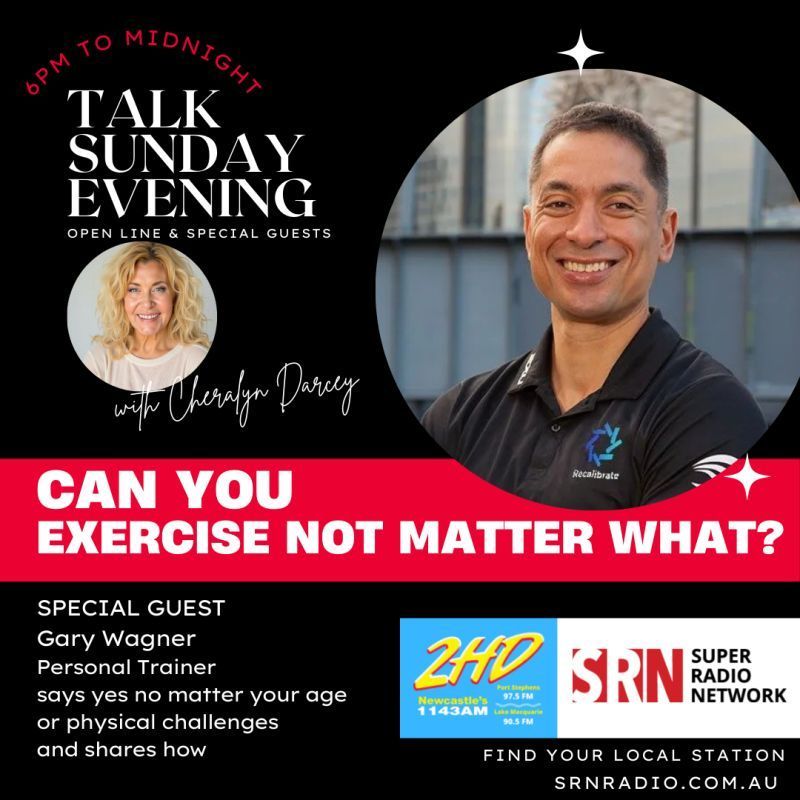Not Lazy, Just Stuck: Overcoming Fitness Barriers After 40- Expert Advice from Gary Wagner
Think you're too old, too injured, or too busy to get fit? Gary Wagner shows how the right approach—not more effort—can change everything after 40.

Overcoming Barriers to Fitness After 40: Expert Insights from Gary Wagner
Many people over 40 feel that fitness is beyond their reach. Whether it’s old injuries, a busy lifestyle, or just feeling physically challenged, the barriers to exercise can seem overwhelming. But according to Gary Wagner, director of Recalibrate in Melbourne, fitness isn’t about pushing through pain—it’s about finding the right approach for you.
Why You’re Not Lazy—You Just Have Barriers
Gary believes that no one is truly lazy when it comes to fitness. Instead, we all have obstacles—physical, mental, or logistical—that make it hard to get started. The key is recognizing those barriers and finding solutions that work for your unique situation.
“My journey started 20 years ago after a serious back injury sidelined me for a year,” Gary shares. “Since then, I’ve worked with people who felt they had insurmountable challenges. The truth is, most limitations we blame on age or past injuries are just stories we tell ourselves. We just haven’t found the right approach yet.”
Building Your Support System
Getting fit doesn’t mean doing it alone. A strong support system—a “village,” as Gary puts it—is essential. This could include:
- A doctor who understands your needs
- A personal trainer who listens to you
- A supportive friend or family member
- Online fitness communities for motivation
“The most important thing is having someone who sees you as a person, not just a condition,” Gary says. “At Recalibrate, we help people with arthritis, past surgeries, and mobility challenges move better and feel better.”
Small Changes That Make a Big Difference
When starting out, small, consistent changes matter more than extreme transformations. Two of Gary’s top recommendations are:
- Practice Belly Breathing
- Place your hands on your belly.
- Inhale deeply through your nose, letting your belly expand.
- Exhale slowly.
- Repeat for a few minutes daily to reduce tension and improve movement.
- Stay Hydrated
- Many people are chronically dehydrated, affecting energy levels and joint health.
- Increase water intake and, if needed, add electrolytes (if medically safe).
- Improved hydration can boost metabolism and mental clarity.
A Real-Life Transformation
One of Gary’s clients, Helen, struggled for years with chronic pain due to hypermobility. After trying different approaches, she nearly gave up—until she found Recalibrate. By focusing on the basics, like breathing and gentle movement, Helen saw dramatic improvements in how she felt and moved. Her story proves that the right plan can make all the difference.
What to Look for in a Trainer
If you’re thinking about hiring a personal trainer but feel intimidated, Gary has three key tips:
- Find a trainer whose message resonates with you. If they don’t feel like a good fit, trust your instincts.
- Look for a structured approach. A good trainer won’t just throw random exercises at you—they’ll create a tailored plan.
- Expect measurable results. At Recalibrate, every session includes movement assessments and data tracking to ensure real progress.
The Takeaway: Less Pain, More Gain
If fitness feels overwhelming, start small. Focus on simple habits like hydration and breathing exercises. And remember: the goal isn’t no pain, no gain—it’s less pain, more gain.
“The best time to start was 20 years ago,” Gary says. “The second-best time is today.”
Acknowledgement
Gary would like to thank Cheralyn Darcey for inviting him to her radio show and podcast, Talk Sunday Evening. It was a great discussion on overcoming fitness barriers after 40. You can listen to the full episode here.
Share this article




